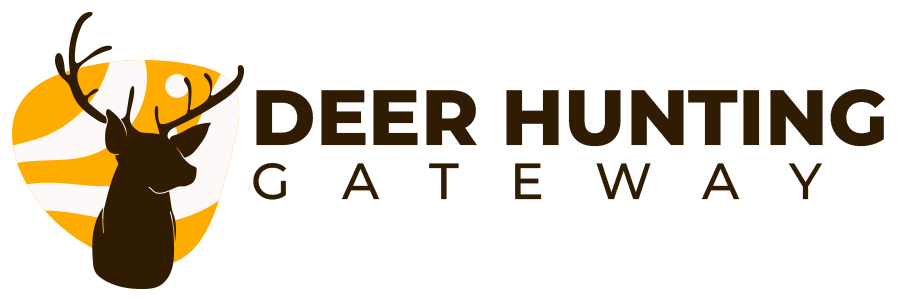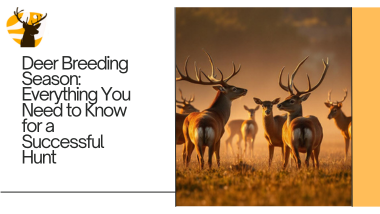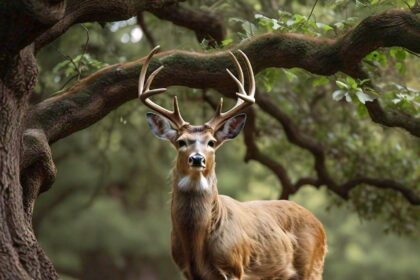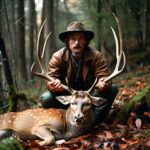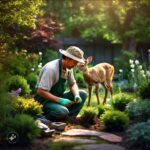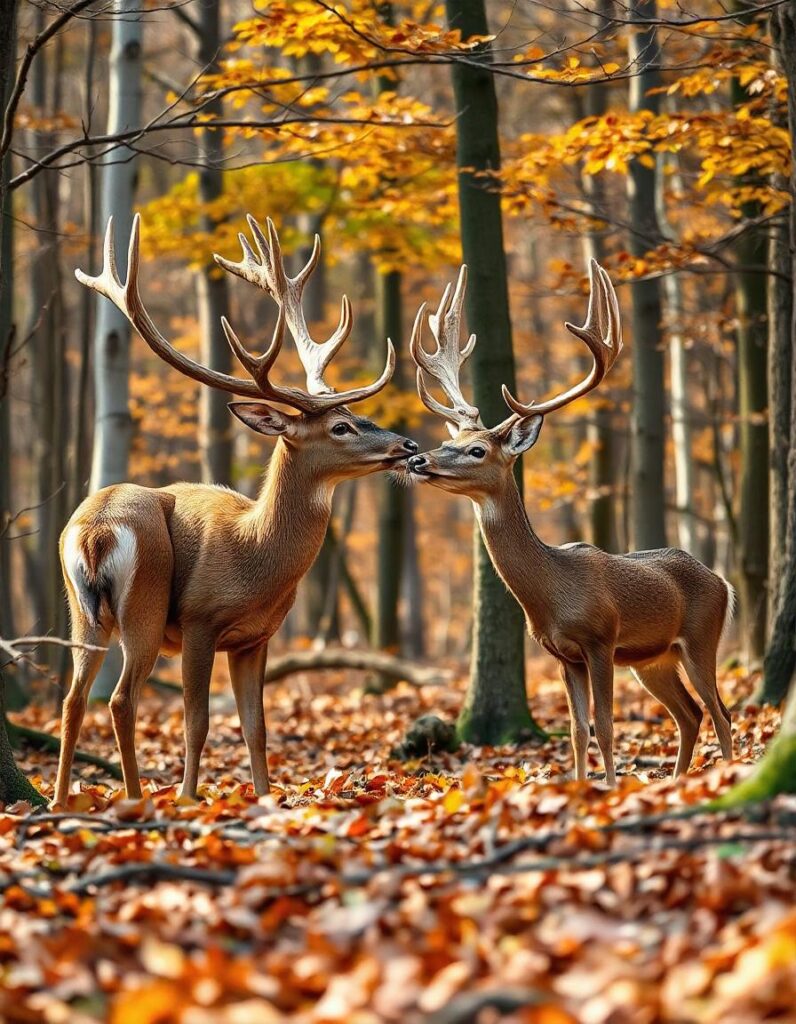
Have you ever wondered why some hunters always seem to bag the biggest bucks, while others come back empty-handed?
The difference often lies in understanding the basics of deer behavior, particularly during the most exciting time of the year, the deer breeding season, also known as the rut.
For any hunter, this is the gateway to the ultimate hunting experience. If you’re serious about improving your chances this season, mastering the basics of hunting during the rut is crucial.
In this article, we’ll break down everything you need to know about hunting during deer breeding season.
If you’re a seasoned hunter looking for a refresher or a newbie hoping for some hunting tips, you’ll find valuable insights to guide you through your next adventure.
Keep reading, because what’s coming next could change your entire approach to deer hunting.
The Basics of the Rut: The Key to Deer Hunting Success
Before we dive into the hunting tips and tricks, let’s start with the basics.
The rut is the period when deer, especially bucks, are most active because they’re searching for does to breed with.
This makes them far less cautious than usual, offering hunters a unique window of opportunity. Deer that are normally elusive become more visible and approachable, making this the perfect time to plan your next hunt.
What is the Rut?
In simple terms, the rut is the deer mating season.
During this time, bucks are primarily focused on finding and mating with does.
This behavior shift makes them less concerned about human activity, which means they’re more likely to venture out into open areas, travel longer distances, and make more mistake mistakes that experienced hunters use an opportunity to capitalize on.
Understanding how deer behave during the rut can be the ultimate guide difference between a successful hunt and an empty freezer.
Why the Rut is the Best Time to Hunt Deer
Last weekend, I decided to head out to the national forest for some epic Montana hunting.
I met up with my buddy Bob at the camp, and we were pumped to hunt big game like elk and mule deer.
The plan was to explore the backcountry and find ourselves a good buck. We packed our tent and all the finest gear, including our archery equipment, and hit the road early in the morning.
The mountain views were stunning, and there was a good chance we’d spot some whitetail deer or even a black bear if we were lucky.
After setting up our accommodation, we trekked to an open meadow and watched as a herd of moose grazed in the distance. It felt so rewarding to be out in the wilderness, away from the hustle.
We were fortunate to have a guided hunting trip with Lewis, who has been doing this for over 30 years.
He knew all the prime spots for the best shots and taught us how to combine patience with skill.
By the end of the day, we were both pretty excited about the prospect of recording our success in the record book of exceptional hunts.
Hey there, nature lovers! If you’ve ever wandered through the woods in the fall, you might’ve noticed some unusual deer behavior.
That’s right, it’s deer breeding season, and things are about to get wild! Picture this: majestic bucks strutting their stuff, flaunting those impressive antlers, all in a quest to win over the ladies.
It’s like a reality show out in the wild, complete with fierce competition and some serious drama.
As the days get shorter and the air turns crisp, these critters kick their dating game into high gear.
You might see them sparring for dominance or even hear the unmistakable sounds of their calls echoing through the trees. So, grab your binoculars and get ready for a front-row seat to one of nature’s most fascinating spectacles.
Let’s delve into what goes down during this exciting time of year! Ah, deer breeding season, when the woods come alive with a whole lot of antlered drama
If you’ve ever wandered through a forest during this time, you might’ve noticed the air buzzing with excitement (and a bit of chaos).
This is the time of year when bucks are strutting their stuff, showcasing those impressive racks in hopes of winning over the ladies. It’s like a wild animal version of “The Bachelor,” complete with rivalries, sparring matches, and some pretty intense courtship rituals.
From October through December, the deer are all about love, and you can bet there’s plenty of action happening under the cover of the trees.
So, grab your binoculars and get ready to witness nature’s own soap opera—because when it comes to deer breeding, things are about to get wild!
What is the deer breeding season and why is it important for hunters?
The deer breeding season, often referred to as the rut, is that magical time of year when deer are most active and vocal, looking to mate. This usually happens from late October to early December, depending on the region.
For hunters, understanding this season is crucial because it significantly increases your chances of spotting a buck on the move.
During the rut, bucks are more likely to wander outside their usual haunts, making them easier targets for a successful hunt. Plus, the excitement of the chase makes for an unforgettable adventure!
When is the best time to hunt during the deer breeding season?
The best time to hunt during the deer breeding season is typically early in the morning or late in the afternoon when deer are most active.
During these times, bucks are out searching for does, and you might spot them moving through the wilderness or near feeding areas.
It’s also a good idea to keep an eye on the moon phases; many hunters swear by the “moon theory,” suggesting that deer are more active during certain lunar phases. So, plan your hunting trips accordingly for the best opportunity!
What equipment do I need for a successful deer hunt during the rut?
Having the right equipment can make all the difference when it comes to deer hunting.
A reliable rifle or bow is essential, depending on your hunting style. Don’t forget to pack a good set of binoculars for spotting deer from a distance, and a comfortable pair of boots to tackle different terrains.
Scent control products can help you stay undetected, and if you’re serious about it, consider using calls to mimic deer sounds during the rut.
A quality hunting outfitter can also provide you with some top-notch gear if you’re looking for a guided experience!
How can I locate deer during the breeding season?
Locating deer during the breeding season involves understanding their behavior and habits. Look for signs like fresh tracks, droppings, and rubs on trees.
Setting up near food sources, like meadows or timber areas, can also increase your
What is deer breeding season and when does it happen?
The deer breeding season, often referred to as the rut, is that magical time of year when bucks are on the prowl, and the chase is on.
Typically, it varies by region, but in many areas, it happens from late October to early December. During this time, whitetail deer and mule deer become super active and are more likely to be spotted during the day as they’re chasing after does.
This is prime time for deer hunting enthusiasts to gear up and get in on the action!
How does the rut affect deer behavior?
bucks become more aggressive and territorial. They’re trying to establish dominance to attract does.
You’ll notice more scraping and rubbing of trees as they mark their territory. This behavior can lead to some pretty thrilling moments for a hunter.
It’s essential to understand that deer will be moving more than usual, especially at dawn and dusk, so that’s when you want to be out there in the wilderness.
What are the best tactics for hunting during deer breeding season?
When it comes to tactics, you’ll want to consider a few things. First, scouting is key. Know your terrain and find where the deer are likely to gather.
Use scents or calls to lure in bucks. A good strategy is to set up nearby trails or food sources.
Also, consider using a tree stand or ground blind to stay hidden while you wait for that perfect shot.
Remember, patience is your best friend during this hunting adventure!
What type of equipment do I need for a successful hunt?
Your equipment can make or break your deer hunting experience. A reliable rifle or bow is crucial, depending on your preference.
Make sure you have a good scope if you’re using a rifle. Don’t forget about your camouflage clothing to blend in with the environment.
A comfortable camp setup is also essential for long days in the field. Bring along binoculars to spot deer from a distance and a good backpack to carry your gear. Lastly, always check local regulations for what’s allowed!
Do I need a
So, if you’re looking to escape to the national forest and dive into some serious backcountry adventures, you’ve got to check out the premier spots for big game.
Imagine waking up in your cozy tent, ready to grab that license and hit the slopes for some epic archery sessions.
You could be on the lookout for whitetail deer, moose, or even antelope. And let’s not forget about those bear hunts that everyone raves about.
It’s all about that feeling of being in the wilderness area, surrounded by nature’s beauty, while you harvest your dream catch.
Picture this: you’re out there in the open country, spotting big bucks and mature sheep while the sun rises.
It’s one of the best sports out there, trust me! Plus, after a long day of climbing and tracking, nothing beats returning to the lodge for some of the best food.
You can load up on those filling meals, ready to tackle another day in the Rocky Mountain terrain. And if you’re like my buddy Joe
Man, if you’ve ever been out in the national forest land, you know the thrill of it all! Picture this: a crisp morning, the sun just peeking over the mountain, and you’re ready to hit the outdoors with your buddies.
We’re talking about a day full of guided hunting, trying to snag that record-breaking black bear.
You have to have your gear sorted, so make sure to equip yourself with everything you need. It’s a sport that demands patience, but when you’re out there, every moment is enjoyable.
Now, if you’re lucky enough to get your tag and fill your quota, you’ll be hauling back some serious weight.
The adrenaline rush when you spot that majestic creature, it’s like nothing else. You might even want to grab a fork to chow down after a long day of climbing and tracking.
And don’t forget about your trusty horse, they’ll help you cover more ground, especially when you’re covering those rugged acre patches of wilderness.
Imagine sitting on a bench after a long day in the daylight, sharing stories with your crew. It’s a memory you won’t soon forget!
Fortunately, you’ll be booking that trip in no time to experience all this!
During the rut, bucks are more active throughout the day, giving you more chances to spot one.
The key to successful deer hunting is to know when and where to strike. Bucks are constantly on the move, chasing after does and marking their territory, which means they’re likely to make daytime appearances, which rarely happens outside of the rut.
This is why many outfitters and experts consider the rut the ultimate hunting season for deer.
But just knowing when the rut occurs isn’t enough. You need to prepare, understand the terrain, and most importantly, get familiar with how deer behave during this time.
Hunting Tips: Preparing for the Ultimate Adventure
Now that we’ve covered the basics of the rut, it’s time to focus on how you can prepare for your hunt.
Every successful hunt begins long before you step into the woods. From scouting to gear preparation, the basics of hunting during the rut require careful planning and strategy.
Many outfitters stress that preparation is just as important as being in the right place at the right time.
1. Scouting: Know Your Hunting Area
One of the most basic yet critical tips for a successful hunt is scouting your hunting area well before the season begins.
During the rut, deer move outside their usual home range, and bucks are often found in new, unfamiliar areas.
To take advantage of this, it’s important to spend time scouting beforehand.
Look for signs of using trail cameras is a great way to track deer movement. Outfitters recommend placing cameras in strategic locations to monitor when and where bucks are moving.
This will help you pinpoint the best spots to set up your stand when the hunting season begins. Deer activities like rubs, scrapes, and trails lead to feeding or bedding areas.
2. Gear Up: The Basics Every Hunter Needs
You might think that any gear will do during the rut, but the basics of successful hunting gear go beyond just having a rifle or bow.
During the rut, deer rely heavily on their sense of smell, so it’s important to use scent-control products to mask your presence.
Outfitters suggest using scent eliminators on both your gear and your clothing to avoid alerting deer to your presence.
Camouflage is another critical aspect of gearing up. The right camo helps you blend into your surroundings and remain unnoticed by deer.
Outfitters recommend choosing a camo that matches the specific terrain of your hunting area, whether it’s wooded, grassy, or rocky.
3. Timing is Everything: The Best Time to Hunt
If there’s one piece of advice every hunter and outfitter will agree on, it’s this: timing is crucial. While deer are more active throughout the day during the rut, the best times to hunt are early morning and late afternoon.
Bucks tend to be on the move during these hours, chasing does or marking their territory.
Weather conditions also play a role. Overcast days or just after a cold front are ideal times to hunt because deer are more likely to be on the move.
Pay close attention to the weather forecast leading up to your hunt, and adjust your plans accordingly.
The Adventure of the Hunt: What You Might Encounter
Hunting trips during the rut aren’t just about deer, you never know what other wildlife you might encounter.
Depending on where you’re hunting, there’s always the possibility of coming across other animals, including bears.
Though bear encounters are rare during hunting trips, it’s always wise to be prepared, especially if your hunting outfitter operates in areas known for bear activity.
This unpredictability is part of what makes hunting such an exciting adventure.
Outfitters often stress the importance of being ready for anything, so don’t forget your bear spray if you’re in bear country.
And of course, even if you don’t encounter any bears, the thrill of tracking deer during the rut is enough to make any hunting trip a memorable adventure.
The Basics of Patience: The Key to the Ultimate Hunting Success
One of the most overlooked basics of hunting is patience. Deer hunting, especially during the rut, requires a lot of waiting.
Bucks may be more active, but that doesn’t mean they’ll walk right in front of your stand as soon as you get set up. Many hunters make the mistake of becoming impatient and moving around too much, which can spook deer in the area.
Outfitters often advise staying in your stand or blind for extended periods and remaining as quiet as possible.
The basics of a successful hunt come down to timing and patience factors that are easy to overlook but can significantly improve your chances of success.
Scent Control: One of the Basics You Can’t Ignore
During the rut, bucks are highly aware of scents. They use their sense of smell to track does and detect danger.
One of the basics of successful hunting is controlling your scent so that you don’t scare off nearby deer.
Outfitters recommend using scent-control products, including sprays, soaps, and laundry detergents specifically designed to eliminate human odors.
In addition to using scent eliminators, consider paying attention to the wind direction when choosing where to set up your stand.
If the wind is blowing your scent toward where deer are likely to appear, you may never see them.
Understanding wind direction and how it affects your scent is a fundamental part of the basics of deer hunting.
Conclusion:
Deer breeding season, or the rut, is a golden opportunity for hunters. But to truly take advantage of this season, you need to master the basics of deer behavior, gear preparation, and patience.
Outfitters can provide you with access to the best hunting areas and the right equipment, but success ultimately comes down to your knowledge and strategy.
By following these basics and staying patient, you’ll increase your chances of bagging that trophy buck.
Remember, the gateway to a successful hunt isn’t just about showing up, it’s about preparation, understanding deer behavior, and using these hunting tips to your advantage.
So gear up, be patient, and get ready for the ultimate hunting adventure.
The rut only comes around once a year, make the most of it.
Ready to put your skills to the test? Share your plans and hunting experiences with us in the comments below.
